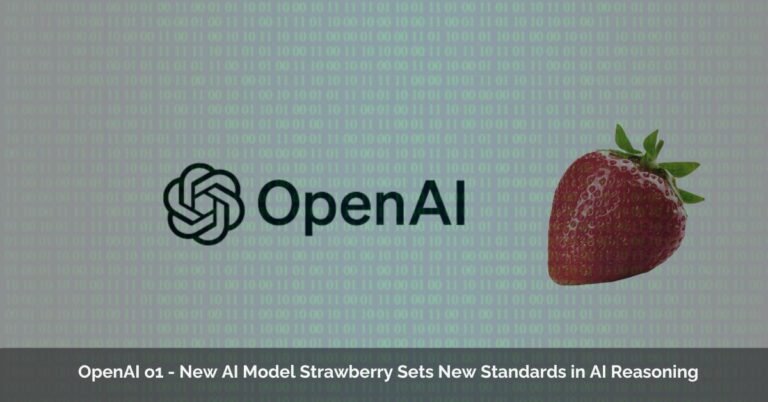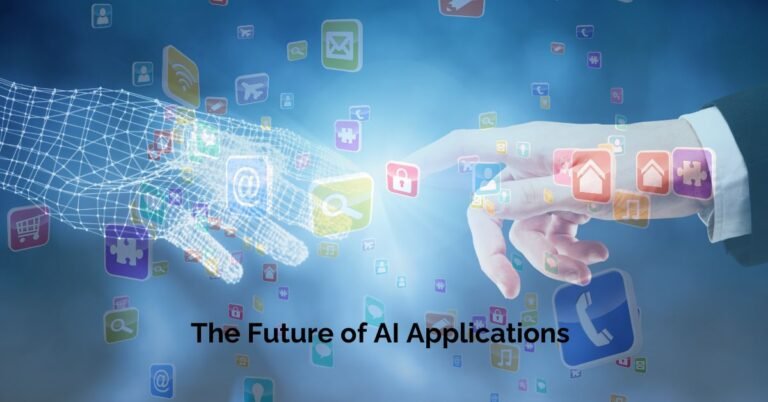Author: Ameerah
Data Analytics in Cloud Computing: Unlocking Insights at Warp Speed
In today’s data-driven world, businesses are sitting on goldmines of information. But extracting valuable insights from this vast ocean of data requires powerful tools and a robust infrastructure. This is where data analytics in cloud computing comes in, revolutionizing the way we process, analyze, and interpret data.
What is Cloud Analytics?
Cloud analytics refers to the practice of performing data analysis tasks on a cloud computing platform. This means that instead of relying on on-premise servers and software, businesses can leverage the scalability, flexibility, and computing power of the cloud to analyze their data.
Here’s a breakdown of the key elements:
- Data analysis: This refers to the process of cleaning, transforming, and interpreting data to uncover patterns, trends, and relationships.
- Cloud computing: This delivery model provides on-demand access to computing resources (servers, storage, databases, networking) over the internet. Popular cloud platforms include Amazon Web Services (AWS), Microsoft Azure, and Google Cloud Platform (GCP).
So, instead of setting up and maintaining your own data center, you “rent” the resources you need from a cloud provider. This allows you to:
- Scale up or down easily: Adapt your resources to your data processing needs without upfront hardware investments.
- Access data from anywhere: Collaborate with team members and stakeholders regardless of location.
- Leverage advanced tools: Utilize pre-built data analytics tools and services, including machine learning and AI, for deeper insights.
- Benefit from cost-effectiveness: Pay only for the resources you use, making it a more cost-efficient option compared to traditional on-premise setups.
Overall, cloud analytics empowers businesses to unlock the hidden potential of their data in a scalable, cost-effective, and collaborative way.
Big Data Analytics in Cloud Computing:
Big data analytics refers to the process of collecting, storing, analyzing, and extracting meaningful insights from massive datasets that are too large and complex for traditional tools. This involves techniques like data mining, machine learning, and statistical analysis to uncover hidden patterns, trends, and correlations that can inform better decision-making.
Benefits of Data Analytics in Cloud Computing
1. Scalability and Elasticity:
Imagine having a data analysis project that suddenly explodes in size. With traditional on-premise setups, you’d be scrambling to buy new servers and software, incurring hefty upfront costs and downtime. Cloud platforms eliminate this pain point. They offer:
- On-demand scaling: Instantly add or remove computing power and storage as needed, adapting to fluctuating data volumes and processing demands.
- Elasticity: Pay only for the resources you use, avoiding expensive idle infrastructure and optimizing your budget.
- No hardware headaches: No need to invest in and maintain physical servers, freeing up your IT team for more strategic tasks.
2. Cost-Effectiveness:
Cloud analytics breaks the traditional “all-or-nothing” investment model. You shed the burden of:
- High upfront costs: No need for expensive hardware and software purchases.
- Overprovisioning: Avoid paying for unused resources with flexible scaling options.
- Maintenance expenses: Cloud providers handle server upkeep and upgrades, saving you time and money.
This translates to:
- Reduced total cost of ownership (TCO): You pay only for what you use, leading to significant cost savings.
- Faster return on investment (ROI): Quicker access to insights and improved decision-making translates to faster business value realization.
- Improved budget agility: Adapt your spending to changing data needs without impacting core operations.
3. Accessibility and Collaboration:
Cloud-based data breaks down geographical and physical barriers. Imagine these benefits:
- Remote access: Analyze data from anywhere with an internet connection, empowering geographically dispersed teams.
- Real-time collaboration: Share insights and work on data projects simultaneously, fostering better teamwork and faster decision-making.
- Improved data governance: Centralized data storage and access controls ensure data security and compliance.
This leads to:
- Enhanced team productivity: Improved collaboration and real-time access boost efficiency and agility.
- Better decision-making: Shared insights from diverse perspectives lead to more informed and data-driven decisions.
- Increased innovation: Easier access to data fuels creativity and encourages experimentation with new data-driven initiatives.
4. Advanced Analytics Capabilities:
Cloud platforms are packed with powerful pre-built tools and services, going beyond basic data analysis. You gain access to:
- Machine learning and AI: Automate data insights discovery and build predictive models for deeper understanding and future forecasting.
- Big data processing: Handle massive datasets efficiently with scalable cloud infrastructure and specialized tools.
- Advanced analytics tools: Utilize pre-built dashboards, visualization tools, and statistical analysis packages for faster and more comprehensive insights.
This unlocks:
- Deeper data understanding: Extract hidden patterns and trends that traditional methods might miss.
- Predictive capabilities: Anticipate future trends and make informed decisions based on data-driven insights.
- Competitive advantage: Gain an edge by leveraging advanced analytics to optimize operations, personalize offerings, and innovate faster.
5. Improved Data Security:
Cloud providers invest heavily in security, offering robust features and compliance with industry regulations. You benefit from:
- State-of-the-art security infrastructure: Secure data centers with advanced security protocols and disaster recovery plans.
- Data encryption: Data is encrypted at rest and in transit, protecting it from unauthorized access.
- Compliance with regulations: Cloud providers adhere to strict industry standards like HIPAA and GDPR, ensuring data privacy and security.
This translates to:
- Reduced risk of data breaches: Robust security measures protect your valuable data from cyber threats.
- Enhanced data privacy: Comply with data privacy regulations and build trust with your customers.
- Peace of mind: Focus on your business goals while the cloud provider takes care of data security.
Real-World Examples of Cloud Analytics in Action:
- Customer Analytics: Imagine an e-commerce company struggling with high customer churn. They leverage cloud analytics to:
- Analyze customer purchase history: Identify frequently bought items, abandoned carts, and popular demographics.
- Track website behavior: Understand user journeys, pinpoint drop-off points, and personalize user experiences.
- Predict churn: Build machine learning models to identify customers at risk of leaving and develop targeted retention campaigns.
Result: Increased customer engagement, reduced churn, and boosted sales through data-driven marketing and product offerings.
2. Fraud Detection: A financial institution uses cloud analytics to:
- Analyze real-time transaction data: Detect suspicious patterns like unusual spending amounts or locations.
- Identify fraudulent activities: Implement machine learning algorithms to flag suspicious transactions instantly.
- Prevent fraudulent transactions: Block fraudulent attempts in real-time, protecting customers and preventing financial losses.
Result: Enhanced security, reduced fraud, and improved customer trust and confidence.
3. Operational Optimization: A manufacturing company utilizes cloud analytics to:
- Monitor production line data: Identify bottlenecks, equipment failures, and inefficiencies in real-time.
- Optimize production processes: Use data insights to adjust machine settings, schedule maintenance, and improve resource allocation.
- Predict equipment failures: Implement predictive maintenance based on sensor data, preventing downtime and minimizing production losses.
Result: Increased production efficiency, reduced operational costs, and improved overall equipment effectiveness (OEE).
4. Product Development: A software company leverages cloud analytics to:
- Analyze user feedback and usage data: Understand user needs, pain points, and feature preferences.
- Identify popular features and emerging trends: Use data insights to guide product roadmaps and development priorities.
- Conduct A/B testing and track user engagement: Optimize new features and user interfaces based on real-time data-driven insights.
Result: Develop products that meet user needs, maximize user engagement, and stay ahead of market trends.
5. Competitive Intelligence: A retail chain uses cloud analytics to:
- Track competitor pricing and promotions: Monitor competitor activity and pricing strategies in real-time.
- Analyze customer sentiment and social media trends: Understand customer perceptions of competitors and identify emerging market opportunities.
- Predict competitor moves and adjust strategies: Gain a competitive edge by anticipating competitor actions and making data-driven decisions.
Result: Develop informed pricing strategies, target marketing campaigns effectively, and gain a leading edge in the market.
These are just a few examples of how cloud analytics is transforming different industries. By harnessing the power of the cloud, businesses can gain deeper insights from their data, unlock hidden opportunities, and make smarter decisions that drive success.
Getting Started with Data Analytics in Cloud Computing
Embracing data analytics in cloud computing can be a game-changer for your business. But where do you start? Here’s a detailed roadmap to help you navigate the key steps:
1. Define Your Goals:
Before diving into technology, clarity on your objectives is crucial. What business problems are you trying to solve? What insights do you seek? Be specific, measurable, achievable, relevant, and time-bound (SMART). Examples could be:
- Increasing customer retention by 10% within 6 months.
- Identifying operational inefficiencies and reducing costs by 5% in the next quarter.
- Developing a new product based on customer preferences, launching within a year.
2. Choose Your Cloud Platform:
Major players like AWS, Azure, and GCP offer robust cloud analytics services. Consider factors like:
- Cost: Each platform has its pricing structure, evaluate based on your budget and anticipated usage.
- Services offered: Do they provide the specific tools and resources you need, like machine learning or big data processing?
- Compliance: Ensure the platform aligns with your industry regulations and data security requirements.
- Support: Consider the level of support available if you encounter challenges during setup or usage.
3. Select the Right Tools:
Don’t get overwhelmed by the vast array of options! Align your toolkit with your goals and data type:
- For structured data (e.g., spreadsheets): Tools like Amazon Redshift or Azure Synapse Analytics offer data warehousing and querying capabilities.
- For unstructured data (e.g., text, images): Platforms like Amazon Comprehend or Google Cloud Natural Language API can extract insights from diverse data formats.
- For advanced analytics (e.g., machine learning): Consider Amazon SageMaker or Azure Machine Learning services to build and deploy predictive models.
4. Migrate Your Data to the Cloud:
Moving your data securely and efficiently is crucial. Cloud providers offer migration tools and best practices to guide you. Key considerations include:
- Data volume and complexity: Plan for bandwidth and potential transformation needs.
- Security and compliance: Implement robust security measures throughout the migration process.
- Data governance: Establish clear ownership and access controls for your data in the cloud.
5. Build Your Data Pipelines and Analytics Models:
This is where the magic happens! Design pipelines to extract, transform, and load your data into the cloud platform. Then, build your analytics models:
- Data pipelines: Use tools like AWS Glue or Azure Data Factory to automate data movement and transformation.
- Analytics models: Leverage pre-built tools or write custom code depending on your complexity and expertise. Start with simpler models and iterate based on results.
6. Train Your Team:
Empowering your team is essential for success. Invest in training programs or resources to equip them with:
- Cloud platform knowledge: Understanding the chosen platform’s functionalities and user interface.
- Data analytics skills: Learning data analysis techniques, statistical analysis, and data visualization best practices.
- Security awareness: Ensuring everyone understands and adheres to data security and privacy policies.
Remember: This is a journey, not a destination. Continuous learning, experimentation, and refinement are key to maximizing the value of cloud analytics. Don’t hesitate to seek help from cloud providers, online communities, or consultants as you navigate this exciting path.
Understanding the Costs of Cloud Analytics: Optimizing Your Spending
Cloud analytics offers immense potential for unlocking insights and driving business value, but navigating its cost structure requires careful planning and optimization. Here’s a deep dive into pricing models, hidden costs, and strategies to get the most out of your cloud analytics budget:
Understanding the Cloud Pricing Landscape:
Cloud providers like AWS, Azure, and GCP offer various pricing models for data analytics services, each with its own nuances:
- Pay-as-you-go: This popular option charges based on your actual usage of resources like compute power, storage, and data transfer. It’s cost-effective for short-term projects or fluctuating workloads, but can be unpredictable for long-term usage.
- Reserved instances: Committing to upfront payment for reserved resources (compute, storage) secures a discounted rate, ideal for predictable workloads. However, it lacks flexibility and can lead to overspending if usage patterns change.
- Spot instances: Bidding on unused resources at discounted rates offers significant cost savings, but comes with the risk of instances being interrupted when the provider needs them back.
Hidden Costs to Watch Out For:
Beyond the core service fees, several hidden costs can inflate your cloud analytics bill:
- Data egress fees: Moving data out of the cloud storage incurs charges, so consider optimizing data transfer and storage location.
- API calls and request fees: Frequent API calls and data requests can add up, especially with complex analytics pipelines.
- Unused resources: Leaving idle resources running unnecessarily consumes resources and costs money. Implement auto-scaling and monitoring tools to optimize resource usage.
- Data processing costs: Certain advanced data processing services like machine learning or big data analytics can be expensive, so choose resources based on your specific needs.
Strategies for Optimizing Cloud Analytics Spending:
Here are some key strategies to keep your cloud analytics costs under control:
- Rightsize your resources: Choose the appropriate instance types and storage options based on your workload demands. Don’t overprovision, and utilize auto-scaling to adjust resources dynamically.
- Optimize data pipelines: Streamline your data pipelines to minimize unnecessary data processing and storage. Consider sampling techniques or data compression where appropriate.
- Utilize cost optimization tools: Cloud providers offer tools and services to help you identify and eliminate wasteful spending. Use cost reports and recommendations to track and optimize your usage.
- Negotiate with your cloud provider: For high-volume usage, consider negotiating customized pricing plans with your cloud provider to potentially secure lower rates.
- Explore open-source alternatives: For specific tasks, consider using open-source tools and services instead of proprietary cloud-based solutions, potentially saving costs.
- Invest in training: Train your team on cloud cost optimization best practices to ensure everyone understands and contributes to responsible resource usage.
Optimizing cloud analytics costs is an ongoing process. Regularly monitor your spending, analyze cost drivers, and adapt your strategies based on your evolving needs. By understanding the pricing models, hidden costs, and employing these optimization techniques, you can harness the power of cloud analytics without breaking the bank.
The Future of Data Analytics in Cloud Computing: A Glimpse into Tomorrow’s Possibilities
The world of data analytics in cloud computing is constantly evolving, driven by rapid technological advancements and an ever-growing hunger for insights. As we peer into the future, here are some exciting trends that will likely shape this landscape:
1. Democratization of Data Analytics:
- No-code/low-code platforms: Imagine anyone, regardless of technical expertise, being able to analyze data! User-friendly interfaces and pre-built tools will empower citizen analysts and democratize data-driven decision-making across all levels of an organization.
- AI-powered insights: Advanced AI algorithms will automate data exploration and analysis, uncovering hidden patterns and correlations that humans might miss. This will enable faster and more accurate insights, even for complex datasets.
2. Hyper-Personalization and Real-time Decisions:
- Edge computing: Processing data closer to its source, at the edge of the network, will enable real-time insights and immediate decision-making. Imagine optimizing manufacturing processes in real-time based on sensor data or personalizing marketing campaigns based on individual customer behavior as they interact with your website.
- Streaming analytics: Continuous analysis of data streams will provide real-time insights into ongoing events, enabling proactive responses to changing trends and opportunities. This will be crucial in areas like fraud detection, traffic management, and social media sentiment analysis.
3. Enhanced Security and Privacy:
- Privacy-preserving analytics: Techniques like federated learning and homomorphic encryption will allow data analysis without compromising individual privacy. This will enable collaboration and knowledge sharing while ensuring data remains secure and confidential.
- Blockchain-powered security: Blockchain technology can offer tamper-proof data tracking and enhanced data governance, building trust and transparency in data-driven processes.
4. Integration with the Internet of Things (IoT):
- Exponential data growth: The explosion of IoT devices will generate massive amounts of data. Cloud analytics will be essential for processing, analyzing, and extracting valuable insights from this vast data ocean.
- Predictive maintenance and intelligent automation: By analyzing sensor data from connected devices, businesses can predict equipment failures, optimize maintenance schedules, and automate processes for improved efficiency and cost savings.
5. Ethical considerations and responsible AI:
- Bias detection and mitigation: As AI plays a larger role in data analytics, addressing potential biases in algorithms and ensuring responsible AI development will be crucial to avoid discrimination and unfair outcomes.
- Explainable AI: Understanding how AI models arrive at their conclusions will be essential for building trust and transparency in data-driven decisions.
These are just a few of the exciting possibilities that lie ahead for data analytics in cloud computing. As technology continues to evolve, the ability to harness the power of data will be a key differentiator for businesses across all industries. By embracing these trends and staying ahead of the curve, you can unlock a future of data-driven success for your organization.
Gazing into the Crystal Ball: Future Trends and Technologies in Cloud Analytics
The realm of cloud analytics is a dynamic one, constantly evolving and expanding its capabilities. To stay ahead of the curve, here are some exciting trends and emerging technologies on the horizon:
1. Quantum Computing:
While still in its nascent stages, quantum computing holds immense potential for data analytics. Its ability to handle complex calculations exponentially faster than traditional computers could revolutionize areas like:
- Advanced analytics: Solving previously intractable problems in machine learning and artificial intelligence, leading to deeper insights and more accurate predictions.
- Financial modeling: Optimizing complex financial models and risk assessments with unprecedented speed and accuracy.
- Drug discovery: Accelerating the discovery and development of new drugs by simulating molecular interactions at a quantum level.
2. Edge Computing and Decentralized Analytics:
Processing data closer to its source, at the “edge” of the network, offers several advantages:
- Reduced latency: Real-time insights and faster decision-making, particularly crucial for applications like autonomous vehicles or industrial automation.
- Security and privacy: Processing data locally mitigates concerns about data breaches and centralized data storage.
- Efficiency: Reduces data transfer costs and network bandwidth strain.
3. Continuous Learning and Self-Optimizing Systems:
Traditional data analytics models require frequent retraining and updates. The future lies in:
- Adaptive models: Continuously learning and improving based on new data, eliminating the need for manual intervention.
- Autonomous optimization: Systems automatically optimizing their configurations and resource allocation based on real-time data and performance metrics.
4. Explainable AI (XAI) and Responsible Data Analytics:
As AI plays a greater role in data analytics, building trust and transparency is crucial:
- XAI techniques: Making AI models’ decision-making processes understandable, ensuring fairness and mitigating bias.
- Responsible data governance: Implementing ethical frameworks and regulations for data collection, use, and analysis.
5. Democratization of Data Analytics:
Making data analytics accessible to a wider audience:
- No-code/low-code platforms: User-friendly interfaces and pre-built tools enabling non-technical users to analyze data and extract insights.
- Data science as a service (DSaaS): Offering pre-trained models and analytics as a service, reducing the need for specialized expertise.
These are just a few of the exciting possibilities awaiting in the future of cloud analytics. By embracing these emerging trends and technologies, businesses can unlock new levels of data-driven innovation and success.
Final Wording and Conclusion:
As the ever-growing waves of data continue to swell, cloud computing emerges as a powerful surfboard for navigating this information ocean. Big data analytics, riding on this wave, empowers organizations to extract valuable insights, unlock hidden gems of knowledge, and make data-driven decisions that propel them towards success.
The future of this dynamic duo promises exciting advancements, from the lightning-fast analysis of quantum computing to the democratization of data insights for everyone. By embracing these innovations and navigating the challenges responsibly, organizations can harness the true power of big data analytics in cloud computing and chart a course towards a data-driven future.
Remember, the journey to data-driven success starts with a single step. Take the plunge, explore the possibilities, and unlock the transformative power of big data analytics in cloud computing!
FAQs
- What are the benefits of using cloud computing for data analytics?
- Scalability: Easily adapt resources to changing data volumes and processing needs.
- Cost-effectiveness: Pay only for what you use, eliminating upfront hardware investments.
- Accessibility: Access data from anywhere with an internet connection, fostering collaboration.
- Advanced analytics capabilities: Utilize pre-built tools and services like AI and machine learning.
- Improved data security: Cloud providers offer robust security features and compliance.
- What are the different types of cloud analytics tools and services?
- Data warehousing: Store and manage large datasets for analysis.
- Data lakes: Store and analyze diverse data formats in a raw, unprocessed state.
- Data visualization tools: Create charts, graphs, and other visual representations of data.
- Machine learning and AI: Build models to uncover hidden patterns and make predictions.
- Business intelligence (BI) tools: Analyze data and generate reports to inform decisions.
- What are the challenges of using cloud computing for data analytics?
- Data security and privacy concerns: Ensure proper data protection and compliance.
- Vendor lock-in: Carefully choose a provider with flexibility and open standards.
- Cost management: Monitor and optimize cloud spending to avoid overspending.
- Data governance: Establish clear ownership, access controls, and data quality standards.
- Skilled personnel: Train your team on cloud analytics tools and best practices.
- What are the different cloud platforms for data analytics?
- Amazon Web Services (AWS)
- Microsoft Azure
- Google Cloud Platform (GCP)
- Alibaba Cloud
- IBM Cloud
- What are some real-world examples of using cloud analytics for success?
- Netflix uses cloud analytics to personalize recommendations and improve user experience.
- Walmart leverages cloud analytics to optimize inventory management and reduce costs.
- The Coca-Cola Company uses cloud analytics to track customer sentiment and optimize marketing campaigns.
- How much does cloud analytics cost?
Costs vary depending on your specific needs, data volume, chosen tools, and cloud platform. Explore pay-as-you-go, reserved instance, and spot instance pricing models to optimize costs.
- What skills do I need for cloud analytics?
- Data analysis and visualization skills
- Programming skills (e.g., Python, R)
- Cloud platform knowledge (e.g., AWS, Azure)
- Problem-solving and critical thinking skills
- Is cloud analytics secure?
Cloud providers invest heavily in security, but implementing robust security practices is crucial. Choose a reputable provider and follow best practices for data protection.
- What is the future of cloud analytics?
- Edge computing for real-time insights
- Quantum computing for advanced analytics
- Explainable AI for transparency and trust
- Democratization of data analytics for wider access
- Ethical considerations and responsible data use
- How can I get started with cloud analytics?
- Define your business goals and desired insights.
- Choose a cloud platform and data analytics tools.
- Migrate your data to the cloud securely.
- Build data pipelines and analytics models.
- Train your team on cloud analytics tools and best practices.

























